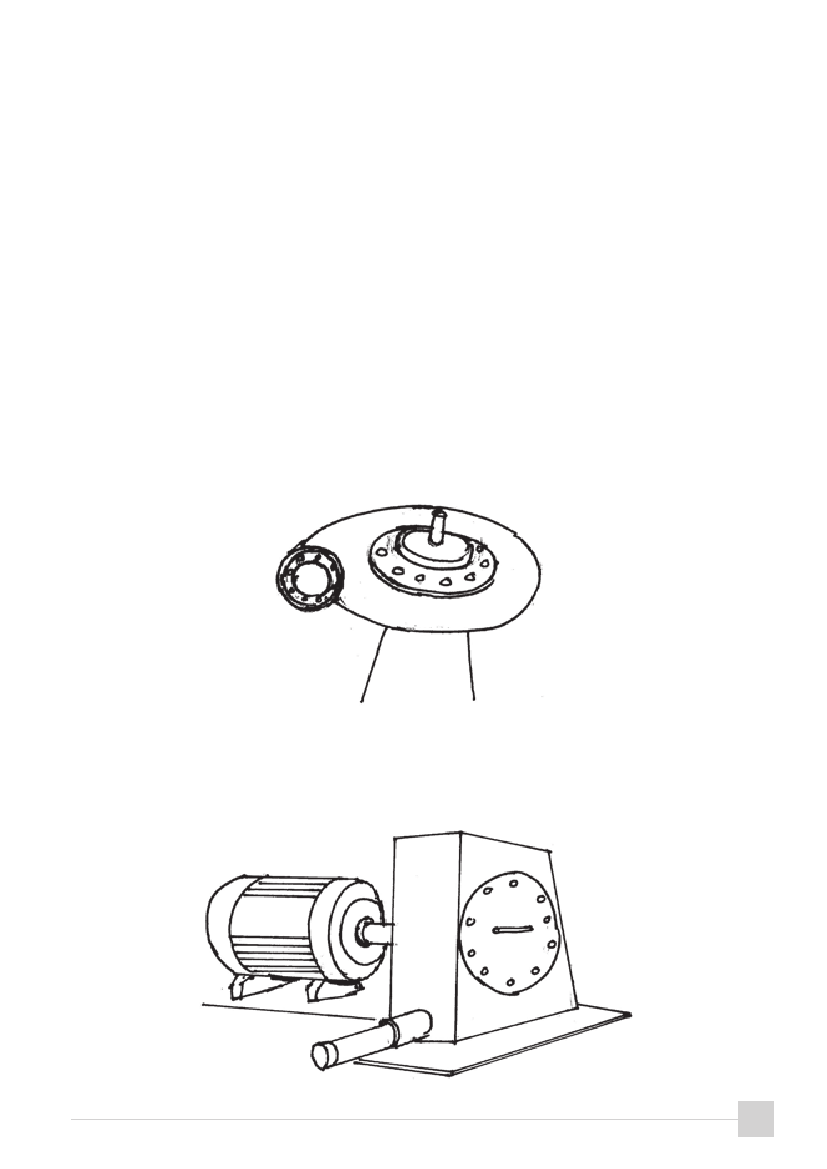
Impulse type turbines are suitable for sites with a relatively high head but a low flow rate. Their efficiency
changes only marginally with the change of the flow rate. These generally can be operated even at 20%
of the designed flow. Reaction type turbines are appropriate for the sites with a low head and a high
flow rates. As mentioned, the housing and the geometry of the components of these turbines are very
important and with a small wear in its inner surface, the efficiency of the turbine can reduce significantly.
On the other hand, these generally can run only beyond 50% of the designed flow rate.
Cross Flow Turbines have features of both impulse and reaction types. Therefore, Cross Flow Turbines
are considered as medium head turbines.
The main specifications of a turbine are its Pitch Circle Diameter (PCD), number of buckets / blades,
rated speed, output power, number of jets and size and the material of the turbine. When the water jet
hits the turbine blades / buckets, along with them, the shaft of the turbine rotates.
Francis Turbine
Pelton Turbine
21